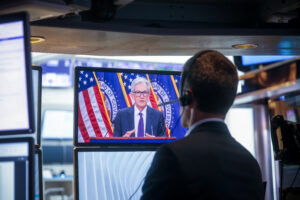
“ ‘Our working hypothesis, which might be disproven, is that September 2, 2020 was the top and the bubble has already popped.’ ”
The top is in for the U.S. stock market after an “enormous” bubble in technology stocks popped last month, Greenlight Capital founder David Einhorn warned in a letter dated Oct. 27 to investors reviewed by MarketWatch.
The S&P 500 index SPX, -1.21% closed at a record 3,580.84 on Sept. 2, while the tech-heavy Nasdaq Composite COMP, -2.45% posted an all-time closing high of 12,056.44. Stocks subsequently pulled back in September, and a new round of COVID-19-related jitters were blamed for another downdraft that saw the S&P 500, Dow Jones Industrial Average DJIA, -0.59% and Nasdaq Composite close Friday with their biggest weekly declines since March.
Read: The stock market’s ‘presidential predictor’ is forecasting a Biden win
Einhorn acknowledged that Greenlight had “prematurely identified” the bubble in a 2016 warning, one he put down in part to the notion that the height of the 1999-2000 bubble was a once-in-a-career experience and that investors wouldn’t repeat “that level of insanity.”
“Clearly, we were mistaken,” he said.
Bubbles, meanwhile, tend to topple under their own weight as all investors finally hop in, short sellers cover, and the “last buyer has bought (or bought massive amounts of weekly calls),” he wrote.
“The decline starts and the psychology shifts from greed to complacency to worry to panic,” Einhorn said.
Einhorn pointed to 10 signs that backed up his bubble call. These include, he wrote:
- an IPO mania;
- extraordinary valuations and new metrics for valuations;
- a huge market concentration in a single sector and a few stocks;
- a second tier of stocks that most people haven’t heard of at S&P 500-type market capitalizations;
- the more fanciful and distant the narrative, it seems the better the stock performs;
- outperformance of companies suspected of fraud based on the consensus belief that there is no enforcement risk, without which crime pays;
- outsized reaction to economically irrelevant stock splits;
- increased participation of retail investors, who appear focused on the best-performing names;
- incredible trading volumes in speculative instruments like weekly call options and worthless common stock; and
- a parabolic ascent toward a top.
Einhorn said that if the call is correct, investor sentiment is shifting from greed to complacency.
“We have adjusted our short book accordingly including adding a fresh bubble basket of mostly second-tier companies and recent IPOs trading at remarkable valuations,” he said.





